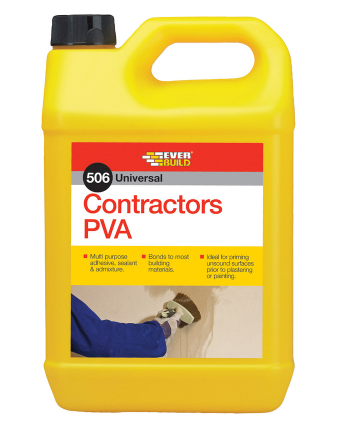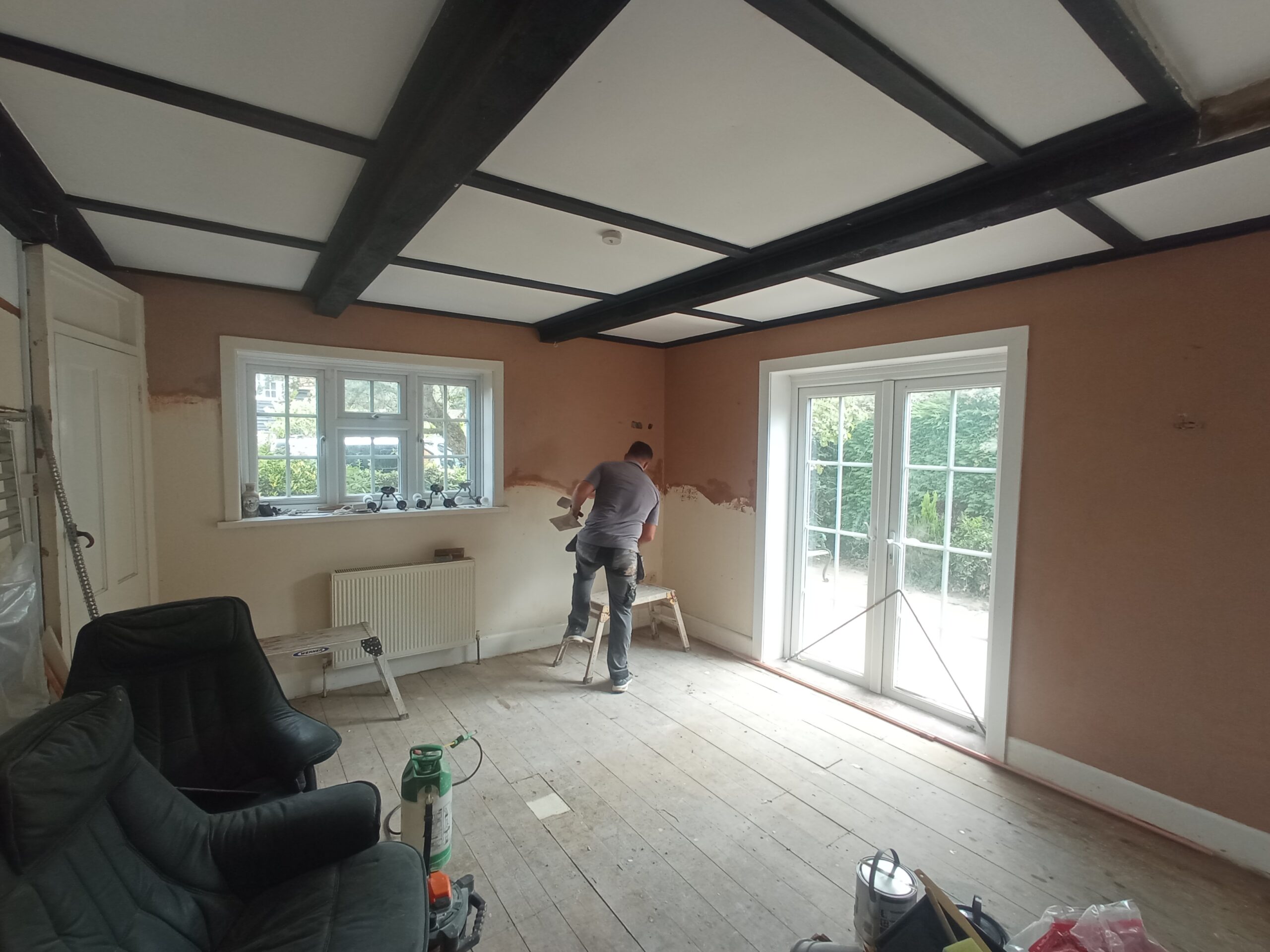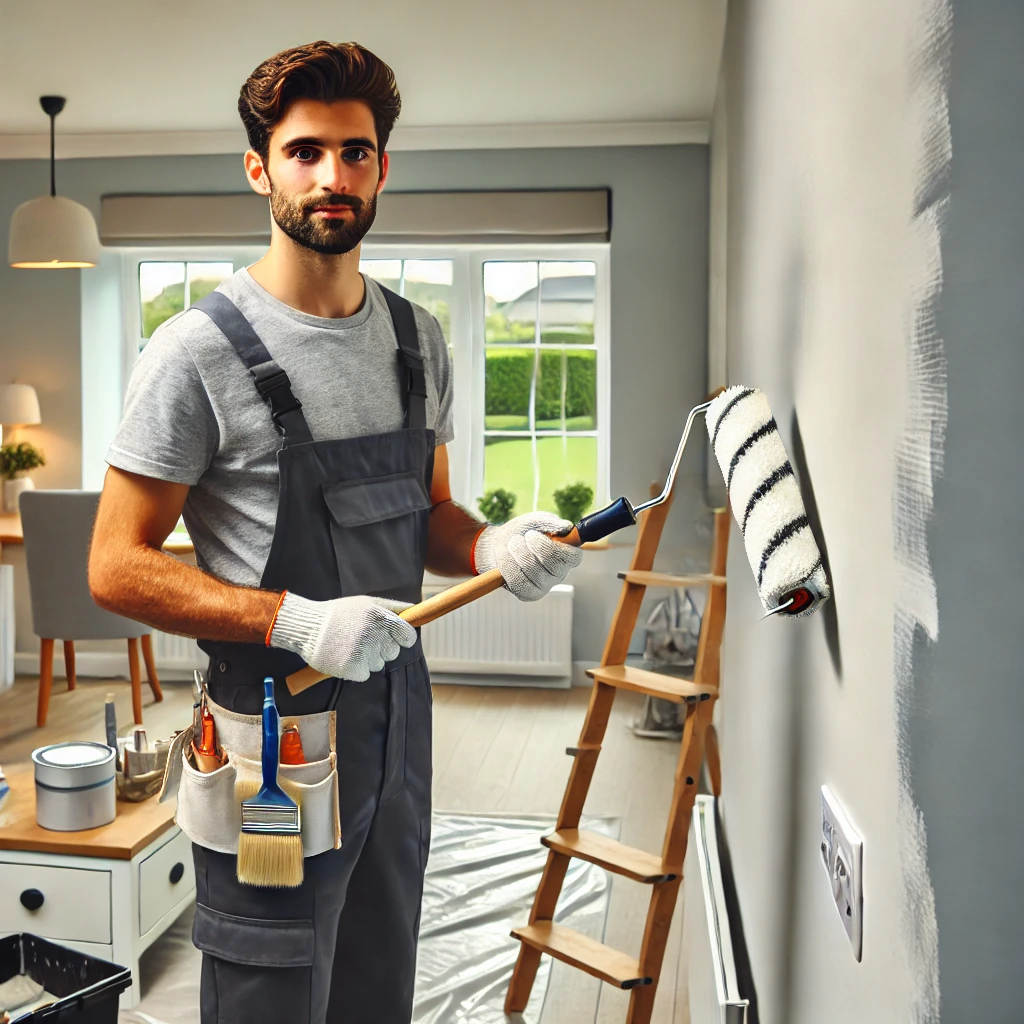Expert Insights from a Professional Plasterer
When it comes to achieving a flawless plaster finish, preparation is everything. One of the most essential materials in a plasterer’s toolkit is PVA glue. But why is it used, and what does it actually do? In this article, I’ll break down the role of PVA in plastering, how it’s applied, and why skipping it can ruin your job.
What is PVA?
PVA is a type of adhesive commonly used in woodworking, building, and decorating. It’s often found in white glue, such as Elmer’s glue or general-purpose craft glue. In plastering, we use a more industrial version—contractor-grade PVA, which is specifically designed for bonding applications on porous surfaces like brick, concrete, or old plaster.
The Main Reasons Plasterers Use PVA
1. To Seal the Surface (Priming)
Before applying new plaster, especially on porous surfaces (e.g., old brick, plasterboard, blockwork, or concrete), PVA is diluted with water and brushed or rolled onto the surface. This acts as a sealant, preventing the substrate from sucking the moisture out of the fresh plaster too quickly.
Why it matters:
If the wall absorbs moisture from the plaster too fast, the plaster can dry out before it has time to properly set and bond—leading to cracking, poor adhesion, or even complete failure of the skim.
2. To Improve Adhesion (Bonding Agent)
PVA acts as a bonding agent between the existing surface and the new plaster layer. Once it becomes tacky (not dry), it provides a sticky surface for the plaster to grab onto, which is especially helpful on smooth or low-suction surfaces like painted walls or concrete ceilings.
Key tip:
Plaster should ideally be applied while the PVA is still tacky, not dry. This gives the best bond and reduces the risk of delamination (where plaster pulls away from the wall over time).
3. To Control Suction
Different surfaces absorb water at different rates. High-suction backgrounds like breeze blocks or old plaster can be very thirsty. Applying one or two coats of diluted PVA helps regulate this suction, allowing you to control the drying time and work more efficiently.
Common mix ratio for suction control:
1 part PVA to 3 or 4 parts water (depending on the surface). Some surfaces may require multiple coats.
4. To Act as a Dust-Proofer
PVA can also bind loose dust and debris to the substrate. This is important because dust on the surface can interfere with the plaster’s ability to adhere properly. By applying PVA, you create a clean, solid base for plastering.
5. To Reduce Cracking and Shrinkage
Because PVA helps the plaster retain moisture during the initial setting phase, it reduces the risk of premature drying—which can lead to hairline cracks or shrinkage cracks. It helps the plaster cure at the right pace for optimal hardness and longevity.
When Not to Use PVA
Despite its benefits, there are some scenarios where PVA should not be used:
- On plasterboard before skimming: Most modern plasterboards don’t need PVA as they are designed for direct plaster application.
- On damp or moldy walls: PVA can seal in moisture or mold, worsening the problem. Always treat the issue before applying any bonding agents.
- Under certain specialist plasters (like lime): Traditional or breathable plasters often require different types of primers or no sealer at all.
How to Apply PVA Before Plastering
- Mix your PVA:
Typical dilution is 1 part PVA to 3 or 4 parts water. - First coat (sealing):
Apply with a brush or roller and let it dry completely. - Second coat (tacky bonding layer):
Apply a slightly stronger mix (1:2 or 1:3), wait until tacky—not dry—and then plaster over it. - Plaster while tacky:
This is crucial. Timing your mix so it’s tacky and not fully set is key to ensuring proper bonding.
Using PVA is a simple but critical step in professional plastering. It helps prime, bond, and regulate suction—all of which contribute to a smooth, long-lasting finish. Skipping this step or applying it incorrectly can lead to costly callbacks and poor results.
Whether you’re skimming a wall, applying a base coat, or prepping for a decorative plaster finish, PVA is your ally in ensuring a durable and professional job.


